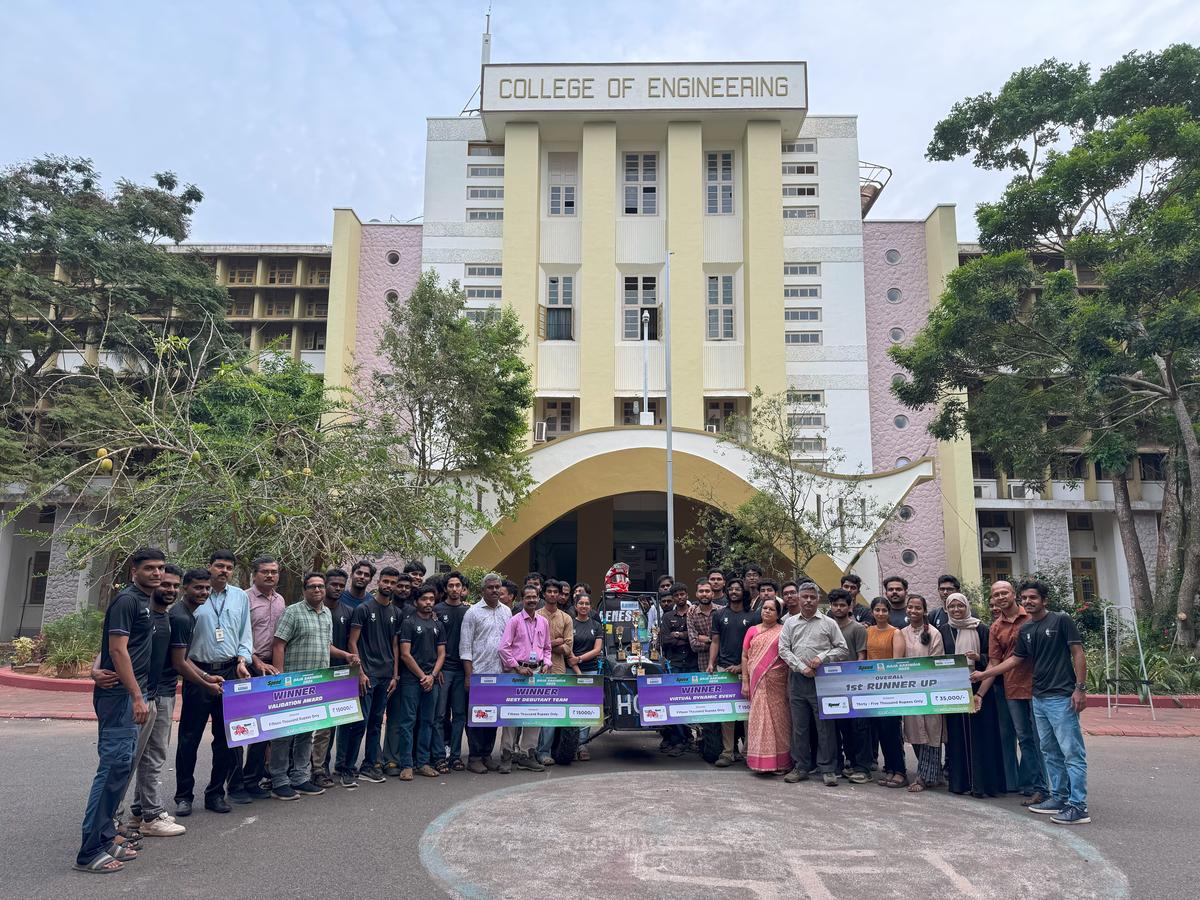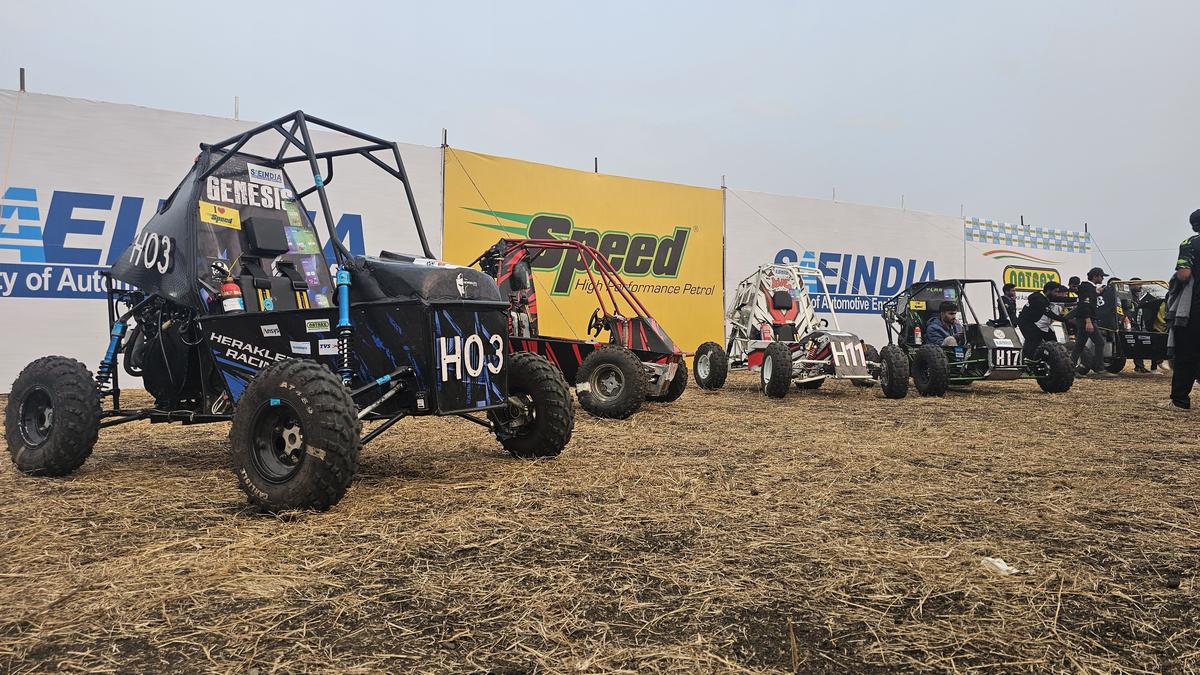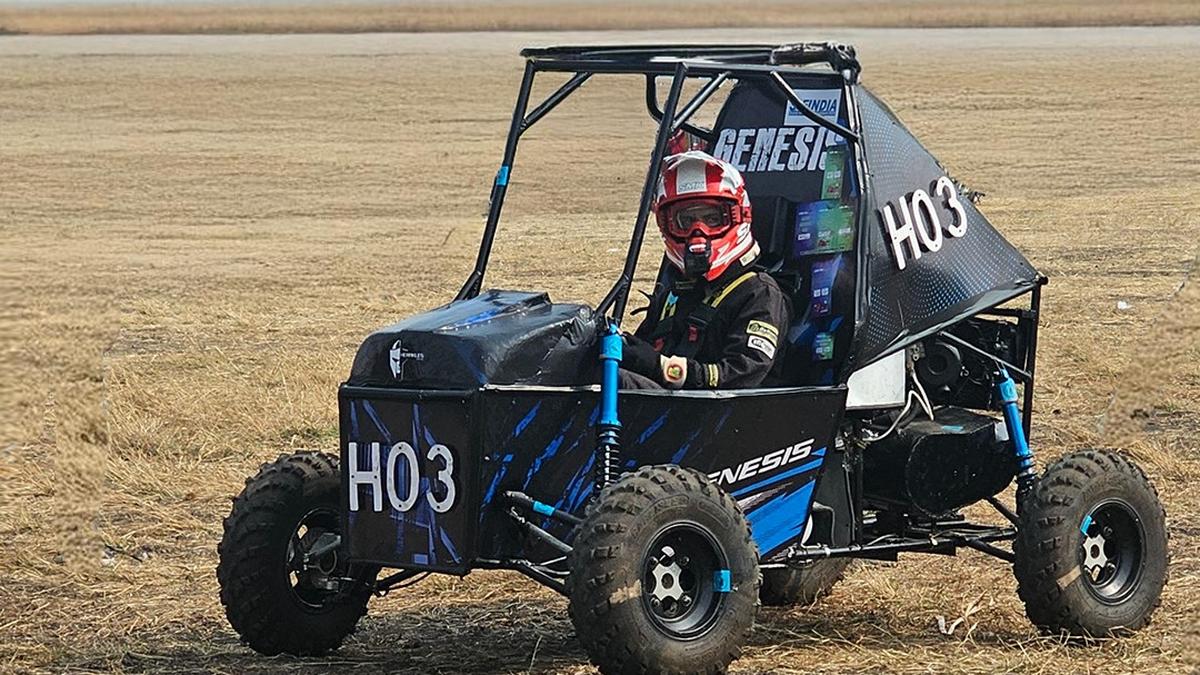Among the 22 college teams participating in the third and final phase of the SAEIndia HBaja 2025 competition was a group of rookies in the hydrogen or CNG-fuelled all-terrain vehicle (ATV) category, Herakles Racing, from the College of Engineering Trivandrum (CET) in Thiruvananthapuram. Around 190 teams registered for the 17th edition of this prestigious contest, to build ATVs for recreation which would function in real-world conditions. But many failed to qualify in the first two phases held online. From January 9 to 12, buggies battled it out with strength, manoeuvrability, efficiency, endurance and more at the National Automotive Test Tracks in Pithampur, Madhya Pradesh.
Ultimately, on the final day, to everyone’s surprise, Herakles Racing came second in overall ranking. They won the best debutant award and also bagged the first rank in validation, efficiency, and virtual dynamics, second in sales and acceleration and third in endurance, sled pulling (pulling a tractor with the ATV), and cost.

Team Herakles Racing at CET, Sreekaryam in Thiruvananthapuram
| Photo Credit:
SPECIAL ARRANGEMENT
Herakles Racing, the college’s official BAJA racing team, was founded by Safwan Abdul Samad, a mechanical engineering student, in 2017. “Safwan wanted to do something beyond the classrooms. So, with the help of a few of his friends, he started this club and even attended a few competitions,” says Gautham S Nair, manager of Herakles Racing.
Currently, there are around 45 members in the team. “Among the members, some even get placement offers from mainstream manufacturers like Mahindra, Hero MotoCorp and so on,” says Gautham.
“We started working on hydrogen-combustion vehicles (which burn hydrogen for fuel) in 2024 with this competition in mind. It took us around a year to get from ideation to execution,” says Gautham.

Herakles Racing buggy at the SAEIndia HBaja 2025 competition
| Photo Credit:
SPECIAL ARRANGEMENT
The team used materials from their EBaja vehicles (electric) to design the buggy. “It would normally cost ₹ 8 to 9 lakh if we were to buy all the components for an ATV. But, since we recycled a lot, we cut down the cost to ₹3 lakh,” says team captain Adith Raj. This amount was raised by the students.

The ATV currently uses 5% hydrogen and the rest CNG, owing to the expensive nature of generating hydrogen fuel through electrolysis (splitting hydrogen and oxygen in water using electricity). Also, there are no hydrogen filling stations in Kerala. In fact, Herakles did not test their vehicle with hydrogen until they reached the SAEIndia tracks. Instead, they used petrol due to the bi-fuel nature of their engine.
Herakles Racing uses a hydrogen combustion engine, which runs like any other internal combustion engine using fossil fuels. “We will improve on this percentage of hydrogen in the coming years. We need a bulkier or reinforced engine for that,” says Gautham. “Currently, the engine material we use is aluminium or cast iron. Maybe if we can use composite material for the engine; it will be more suited for hydrogen fuel,” he adds.
“Many teams use aluminium parts for several components and that limits the weight of the vehicle to around 140 to 170 kilograms, helping them perform better. But since we are reusing material, our ATV weighs around 250 kilograms. We need to find lighter materials for components and better funding to ensure that proper research is carried out in optimising the buggy’s performance,” says Gautham.
“We are working on using a sustainable fuel source, which would help in the future. The only waste from hydrogen combustion is water,” says Rinin Krishna, vice-captain.
“While ATVs come in a different category compared to passenger vehicles, it has applications in defence, farming, search and rescue and so on,” says Rinin.
Published – May 15, 2025 03:44 pm IST


